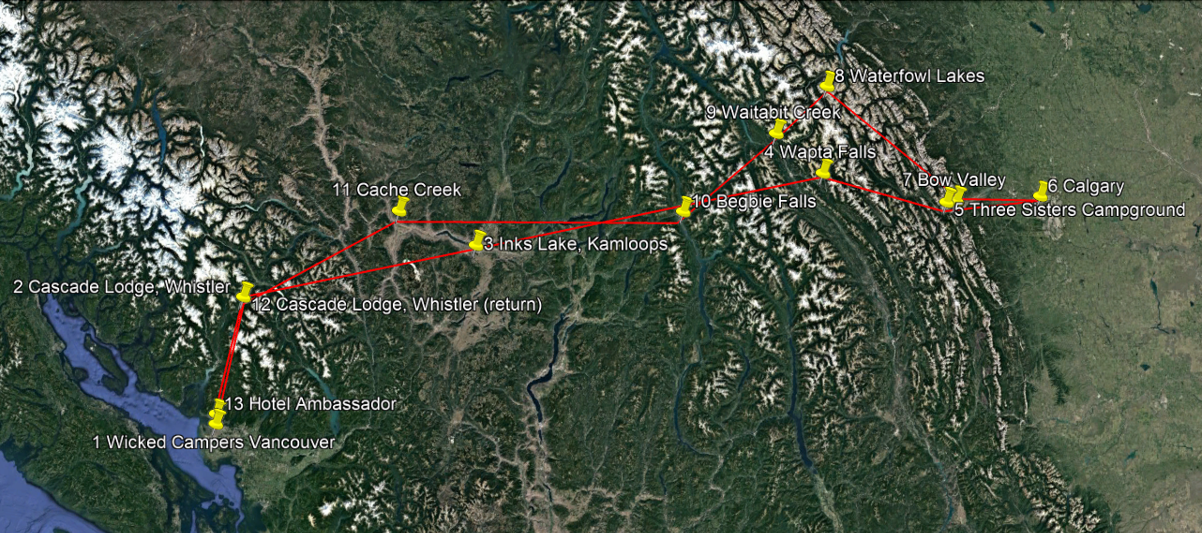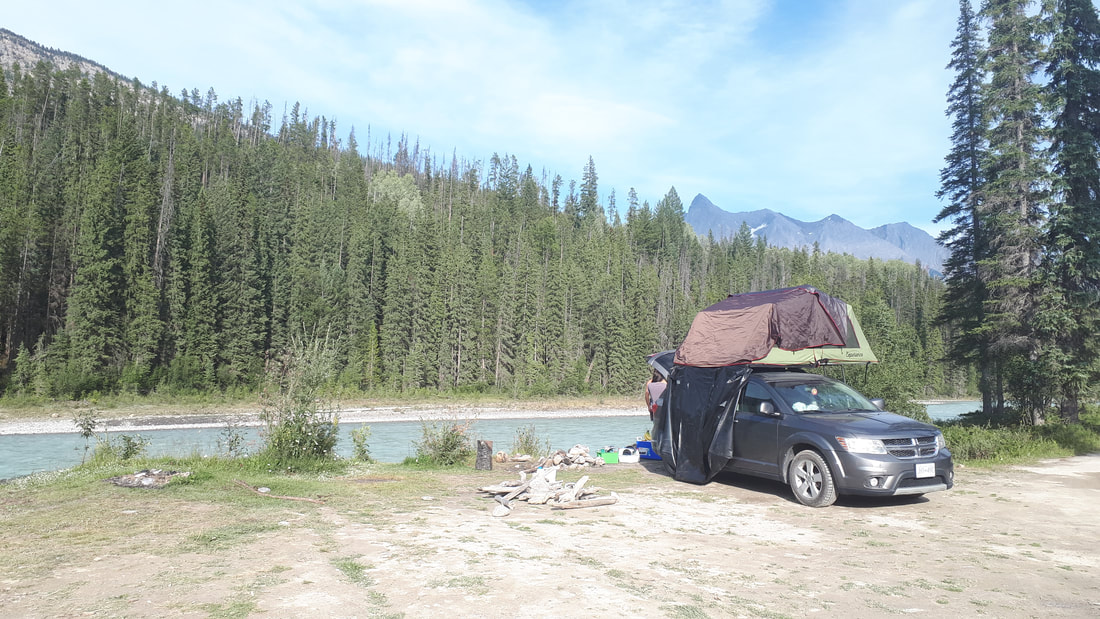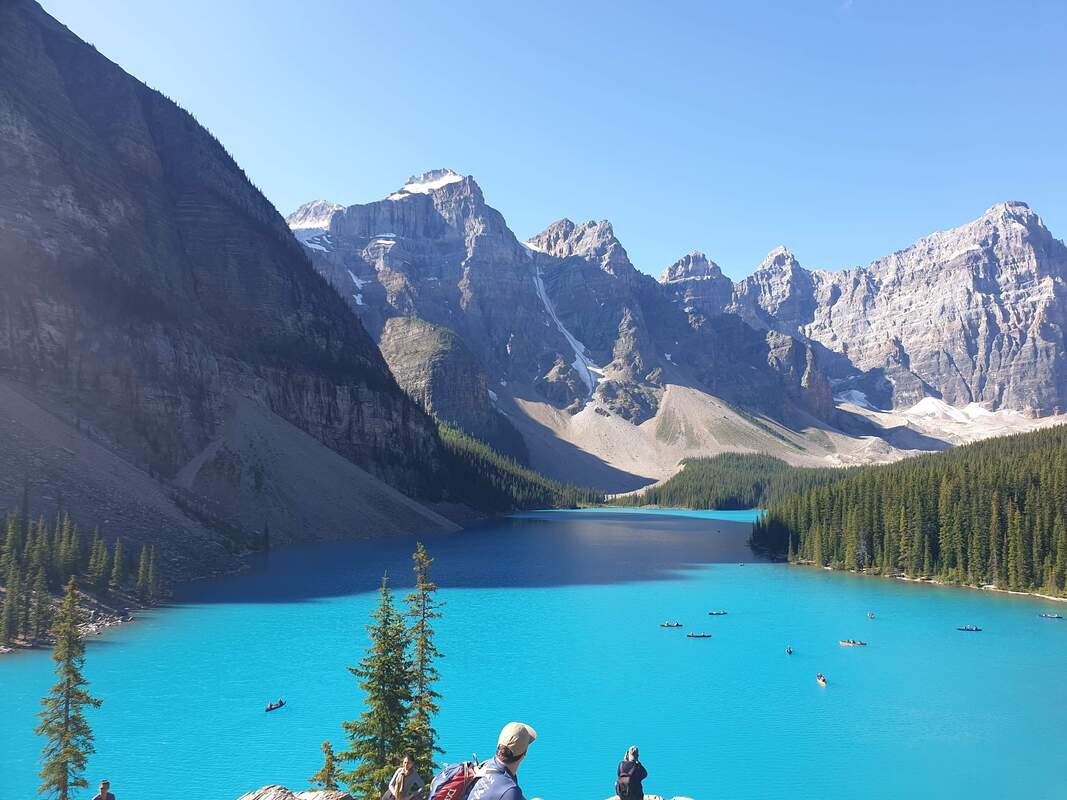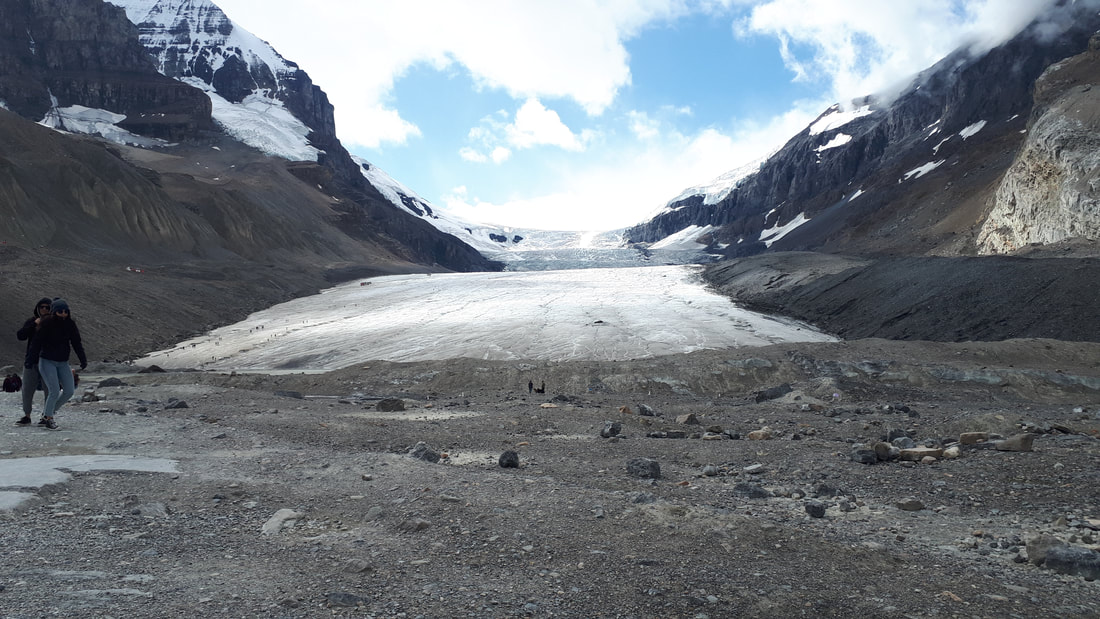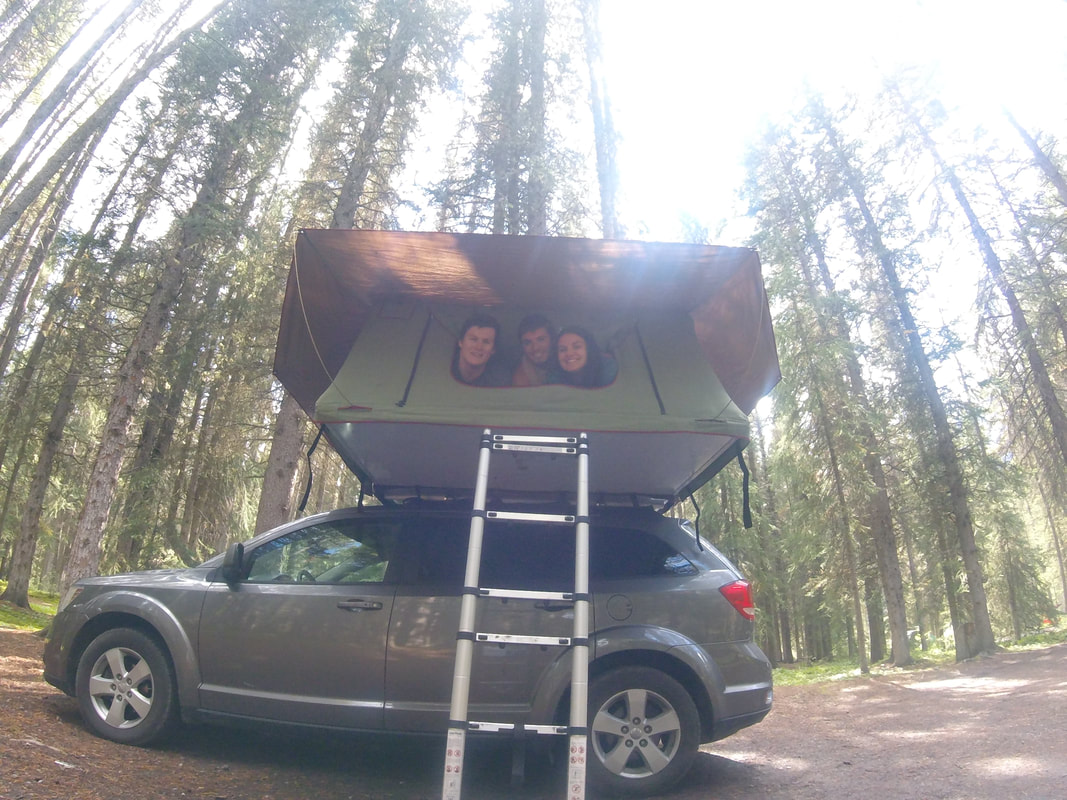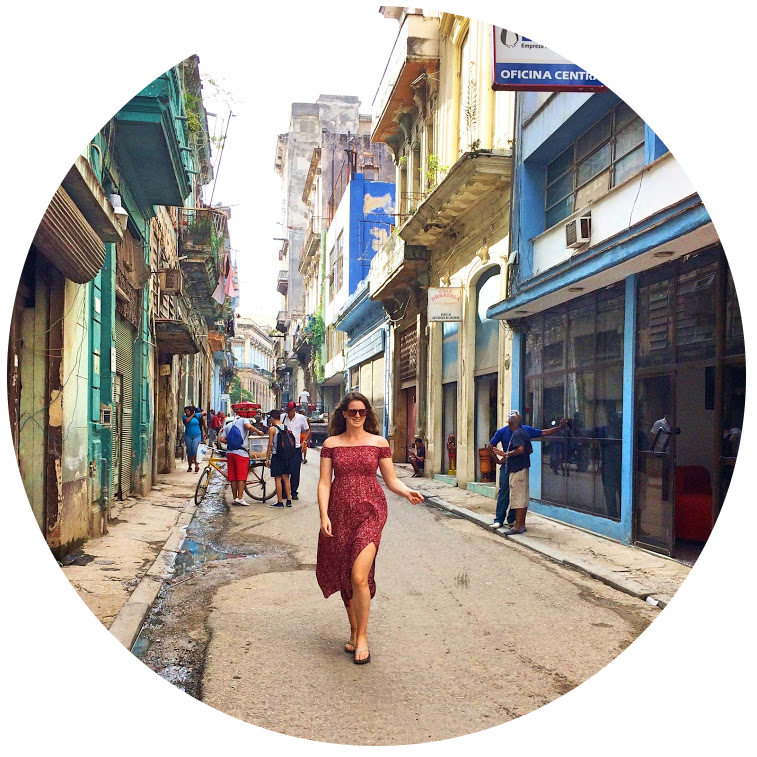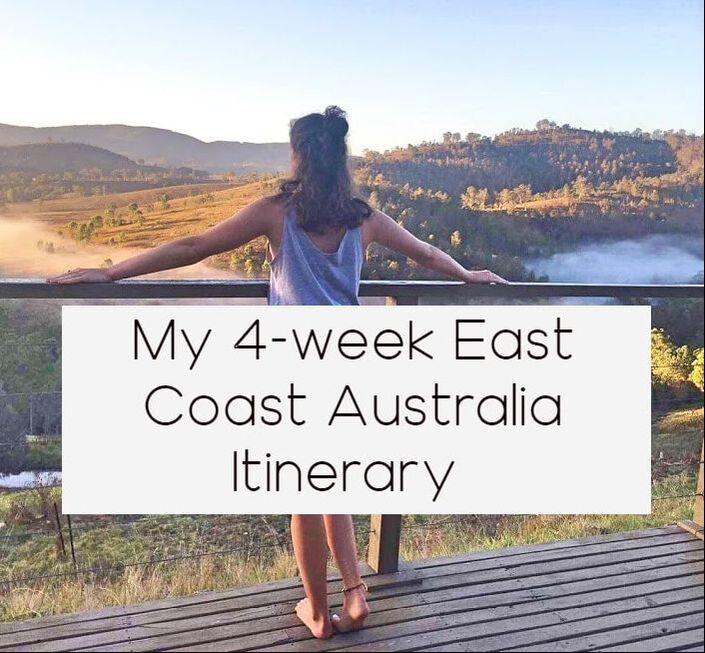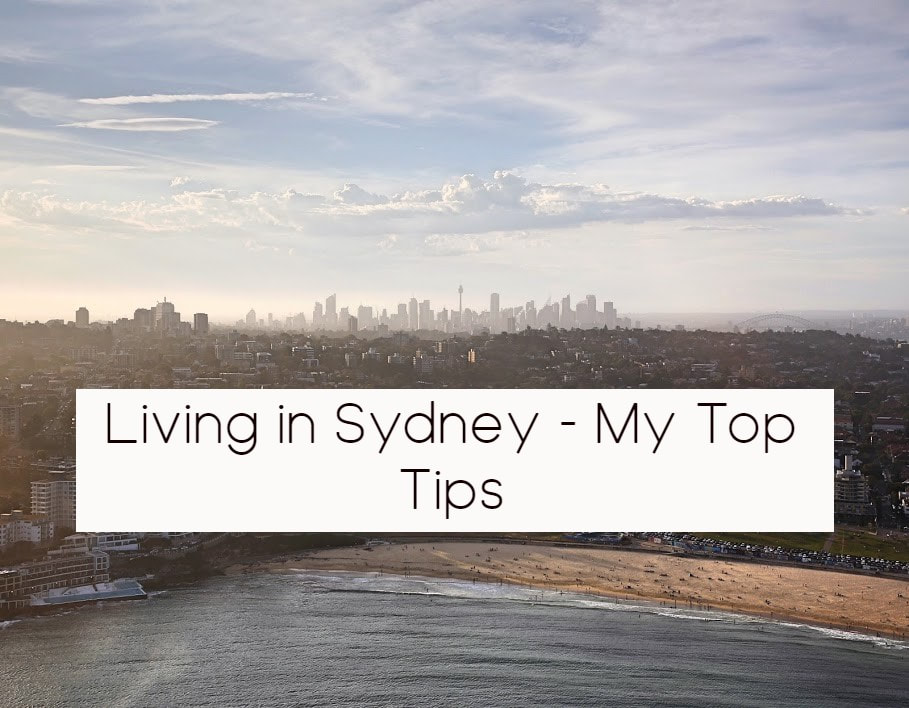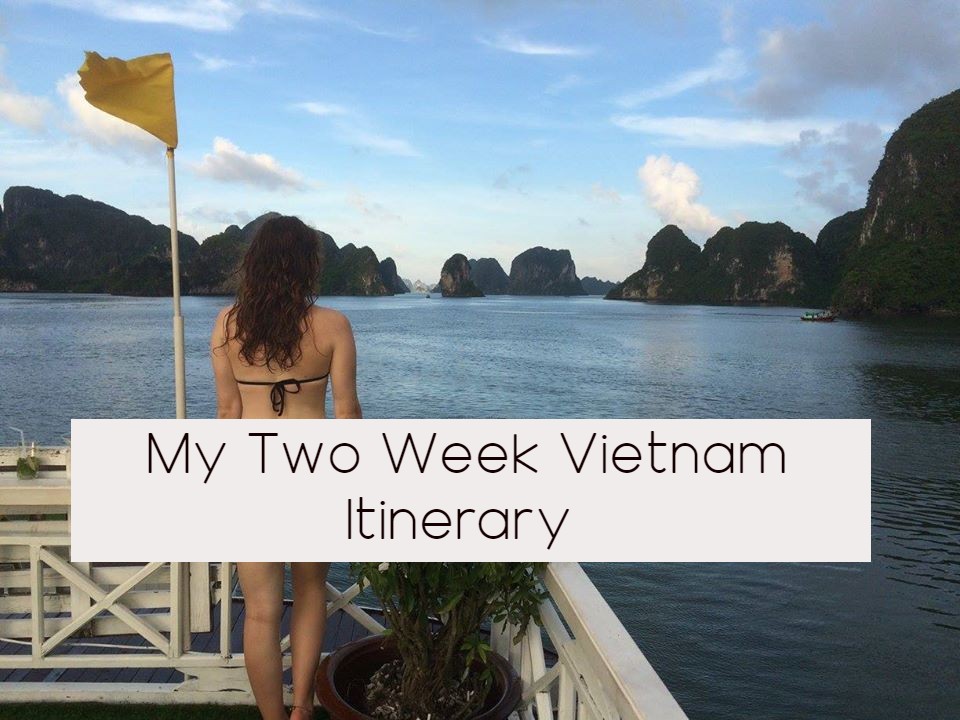Written by George ThomsonI love a road trip, the ability to be able to make a simple holiday into an epic journey is such an alluring thought to me. More so is the ability to remove yourself from the confines of a resort and to delve into the places and people that make up a location. A more tangible slice of reality, somewhat removed from what the lens packaged holidays allow you to see through. On the back of my third summer camp experience in Canada and free from previous restrictions of completing my degree, I joined three friends as we took a Dodge Journey across the Canadian Rockies. The trip centred around the sole idea of wanting to visit Moraine Lake in Alberta and while this may be obvious advice, a good tip for any trip is to have at least one primary goal or location to work towards. With this knowledge, and knowing that one member of our party was time restricted to flying back to Florida, we boarded a 5am flight from Toronto Person Airport to Vancouver. The first port of call was to pick up our transport and for this we hired a Dodge Journey from Wicked Campers Vancouver. Having searched for viable options, Wicked Campers offered the best range of vehicles alongside creative paint jobs that’ll get you noticed on the road. Alas, we hired an all grey 4x4 aptly named ‘Plain Jane’ who we, in our sleep deprived state, quickly renamed ‘Cletus’ and made our way towards our first stop, Whistler. The road to Whistler is one of the most beautiful coastal roads I have rode on in my life. High up among the evergreens gazing west towards snow-capped mountains that dwarf over Howe Sound and Squamish below, the scenery was a far cry from the somewhat flat landscape of Ontario. There was a real sense of freedom here, a landscape so far removed from the concrete jungle of Vancouver mere miles behind us that, taken out of context, could have been mistaken for a locale hidden in one of the most remote corners of the globe. What I didn’t expect was the road signs, written in both English and the language of the First Nation communities of the Pacific Northwest Coast, a cultural co-existence I’ve only ever seen in parts of Wales. This is a theme that I soon learnt is commonplace for many of the notable places across British Columbia, the colonisation and cultural assimilation of the First Nation peoples of Canada is interwoven in a self-reflective narrative. A few hours later and our arrival to Whistler is greeted with one of manmade infrastructure’s biggest oversights, a traffic jam. However, I wouldn’t have wanted to put the brakes on anywhere else with a perfectly central view of Whistler Mountain. Staying with an old friend of ours, the source of the traffic jam was also the source of his excitement for the weekend he had planned for us. Crankworx World Tour 2019 had reached Whistler and with it came the promise of a weekend of partying with NERO performing the headline set. It’s safe to say that I spent most of my money this trip on both of my visits to Whistler, fully immersing myself into the Whistler lifestyle, partying in the sun while exploring the vibrant and open Olympic village surrounded by lush forests and looming peaks. By the end of the weekend and headed north east, out of the mountains, into scenery that completely subverted my expectations of Canada. The change of scenery starts to appear in the town of Lillooet an old mining town that contends for B.C’s hotspot location every summer. Gone was dense greenery and in its place, a semi-arid landscape clinging to the valley walls. The aesthetic was something I’d only ever seen from towns in the Arizona deserts and continued as we got closer towards Kamloops. What I soon learnt was that Kamloops sits on the northern edge of Canada’s only desert, the Okanagan Valley, a rain shadow region for the Coast Mountains that envelope Whistler and Vancouver. As the afternoon set in, we looked for our first camping spot, a recreational ground by Inks Lake. However, the deeper we drove towards the lake, the more uneven the ground became. Eventually, we reversed Cletus back towards the entrance of the park and found a place to park. A big feature of our car was that we had a fold out tent on the roof, simple to use and extremely comfortable and spacious inside. As evening set in, a herd of cattle came in to graze around us and we slept that night with a cool breeze carrying the occasional rustle of hooves on the dry ground. Kamloops, with its yellow and orange aesthetic, came and went as we drove across the desert towards the mountains of Alberta. Soon, we were back among the stereotypical alpine lakes and peaks of the Canadian Rockies. The distances between places in Canada is vast compared to the UK and while this is a fairly obvious observation of North America in general, it does mean that locations along the way are often seen from the view of a car window. Our next camping spot was the inverse of the night before, parked on the banks of Kicking Horse River, just west of Wapta Falls, braving the ice-cold glacial waters. Feeling refreshed, the next day we crossed the border into Alberta and towards our initial goal, Moraine Lake. From two days of relative freedom driving along the Trans Canada Highway, entering the tourist hotspot of Banff National Park was a sharp reminder that we were tourists more than wanderers. Both carparks for Lake Louise and Moraine Lake were packed and entry would come down to patience and a lot of luck. The latter was on our side as we entered our second attempt, seeing the marshals open the gates towards Moraine Lake and letting through three cars, ours being the last. The cars in front stopped to soak in the view of the valley below as we raced ahead, eager to arrive at our prized destination and stunned at how lucky we had been. Moraine Lake did not disappoint, and was just as our friend had dreamed it would be. The glacial waterfall beyond drew crystal clear water into the lake, thick with an aethereal blue hue. Water so opaque, the sight of canoe hulls disappearing under the surface felt otherworldly, adding to the serenity of the landscape. Behind the sea of blue was an equally impressive sea of green with the National Park encompassing the valley floor and walls as far as the eye could see. A brief visit to the gift shop introduced us to a lovely shop worker from Brighton who said she would vouch for us and get us free canoe hire through ‘mates’ rates’. I can’t remember why we didn’t accept her offer. We spent the night outside of Canmore, in a small area known dauntingly as Dead Man’s Flats, braving the freezing waters once again and aimed to spend some proper time in Banff before our inevitable farewell stop in Calgary. Banff itself was an amazing town, sprawling with tourists and full of life and character. Our diner breakfast had us meeting another Brit who encouraged us to visit Mount Norquay which would provide a perfect viewpoint over the Banff and the Bow River Valley. Local knowledge is an invaluable asset and sure enough, the views atop Norquay were astonishing, with a pleasant chair lift ride to boot. At the viewpoint, we spoke to a woman who visited Banff every year and was on the lookout for grizzly bears who liked to raise their young on the slopes. Talk in the town was that a sighting had been confirmed a few days before and subsequently, the walk to the viewpoint had been closed for safely. Sure enough, as she told us the story, we noticed movement among the trees below and suddenly, a mother emerged from the treeline with two cubs cautiously in tow. Fulfilled, we stopped by a liquor store for some celebratory drinks and left the mountains for real civilisation in Calgary. Calgary wasn’t a location we were fussed by and driving in concluded that we weren’t going to miss much from not visiting what felt like a rather generic city. Instead, when four became three, we swiftly retreated back into the wild and north towards Jasper National Park. Jasper was far colder and wetter than we ever expected it to be and staying in Waterfowl Lakes camping grounds, we relied on a steady stream of firewood to keep us warm. Our goal for the return journey to Vancouver was to cover some new ground before we took the familiar route back west and Jasper achieved all of those ideals. We had gone from lush forests, to arid deserts and the flat grasslands of Calgary and now we were in a truly glacial environment. The Columbia Icefields dominates the southern region of Jasper National Park, its glacial waters feeding into the Arctic, Atlantic and Pacific oceans. The Icefields offer a variety of different activities, the cheapest in price being a visit to a skywalk. Overlooking the Sunwapta Valley 280 meters below with views of the Icefield was a unique, yet slightly underwhelming experience where tour guides told us the history and geography of the Icefield and the uncertain future it faces as a result of global warming. While the factual knowledge imparted was fascinating, the views on a cloudy day such as ours failed to justify the money spent. The free option however, to walk over the terminal moraine to the mouth of the Athabasca Glacier, was a beautiful yet harrowing sight. One of the six ‘toes’ of the Icefield, the glacier is an impressive sight, a pearly white and vast hulk of ice and snow lodged between its massive valley walls. Beyond its bordered fence, hikers and specialised coaches climbed its surface to the top along strict, well worn paths. The tragedy of this majestic piece of natural geography is signified by strategically placed markers along the walk to the glacier mouth. Further inspection informed that in our current climate, the glacier is receding 5 meters every year, a total of around 1.5 kilometres since the beginning of the 20th century. With such a high rate of recession, the fear among scientists is that the Icefield will at some point fail to feed water into all three oceans leading to what may be dramatic effects for our climate. As we journeyed south, I was left with a sobering reminder of what natural wonders will be lost as a result of climate change and can safely say being able to visit the Columbia Icefields was a privilege and a major highlight of the entire trip. The return journey west greeted us with much appreciated clear skies and warm weather, joined with a fantastic camping spot at Waitabit Creek where we enjoyed relaxing in the calm waters of a small eddy on the riverbank. From here we visited Revelstoke, a small city and resort on the edge of B.C, guided by one of my companions who had prior experience with the place and regularly reminded us that he ‘nearly did a season here’. From our brief tour around the city, I could definitely see why. Revelstoke is a charming town with classic architecture and a relaxed feel, mixed with a diverse mix of local and seasonal residents. We spent a lengthy amount of time at a local café, charging our phones, chatting with the international staff and soaking in the ambience around us.
Our camping spot for the night would be across the Columbia River near Begbie Falls, another recreational spot, shrouded in thick forest. With more time, we could have seen far more of what Revelstoke had to offer but we were now effectively racing to get back to Vancouver before our hire period expired, spending overnight stops in Cache Creek and Whistler, where we spent most of our money again. Throughout our time on our road trip, we had gotten constant questions from locals and travellers alike either fascinated by our car’s roof tent or amazed to see such a mix of nationalities on the road together. For the record, our party was two Brits, one American and one New Zealander and this combination of accents had us approached by inquisitive Canadians and fellow internationals alike, eager to hear the story of how this journey came to be. In turn, we met some of the most fascinating people, from stereotypically friendly Canadians who had spent time growing up in the UK to seasonaires, keen to tell us the experiences they’d had while living and working in the mountains. As my time in Canada was coming to the end, I waved goodbye to my two remaining travel partners, as they ventured off to spend a week on Vancouver Island, and visit Stanley Park. With my feet firmly in the Pacific Ocean and the warm sun on my face, I reflected on the experience I had been on. Living for two weeks in such close proximity with each other was on a few occasions a challenge. However, I now felt a sense of loneliness traveling on my own in a large and unknown city. The road trip I’d dreamt of since I was young had been everything I’d hoped it would be; full of excitement and beauty, filled with laughs and plenty of joy. Traveling by oneself can be enjoyable but traveling with friends is a must and being able to share all of the experiences in real time with each other further cemented our friendship. Having spent the last two weeks being in the total opposite situation, shielding and not leaving my house, I have had plenty of time to reflect on this adventure. As the road trip’s anniversary draws near, now more than ever do I look forward to getting in a car with some friends and driving somewhere beyond.
0 Comments
Leave a Reply. |
Hi! I'm Holly, a twenty something traveller from the UK. Over the years I've been lucky enough to live and travel in many countries. I've studied in America and working holidayed in Australia and New Zealand! I currently live in South Korea. Learn more about me below!
Read More >> 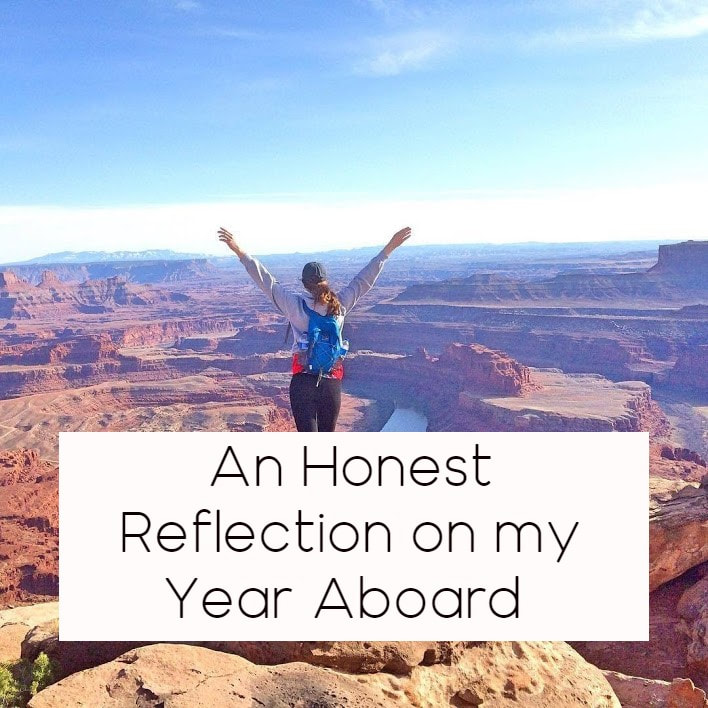
|
